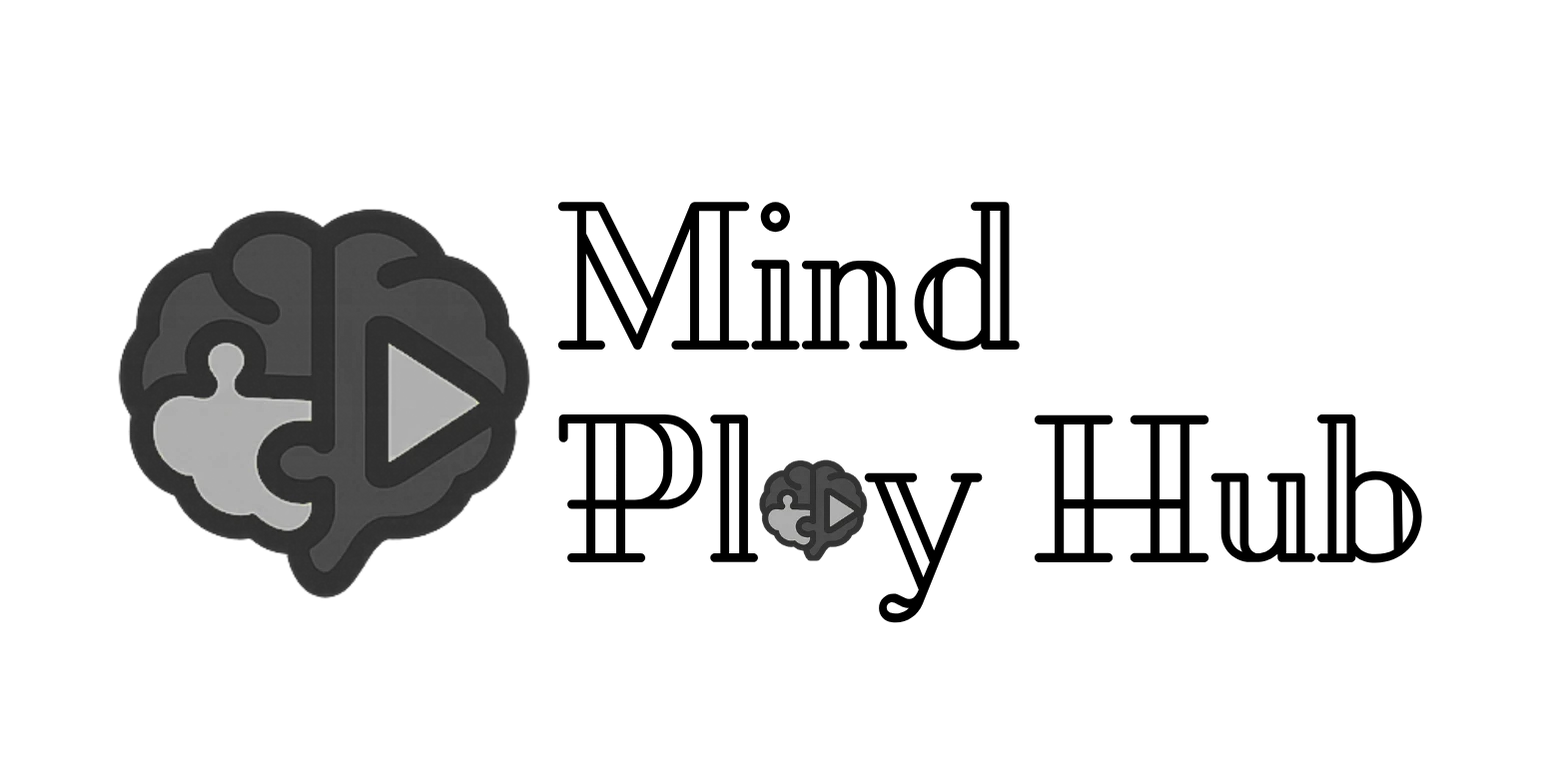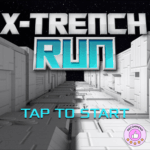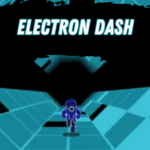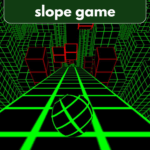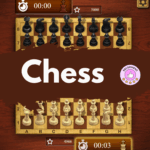Stickman Hook: The Ultimate Brain Game That Swings Into Action
Published in Brain Games | Reading Time: 12 minutes
Discover how Stickman Hook combines addictive physics-based gameplay with cognitive benefits, creating the perfect brain training experience. From problem-solving to pattern recognition, this game challenges your mind while delivering hours of entertainment.
What Makes Stickman Hook a True Brain Game?
In the vast landscape of mobile gaming, few titles manage to strike the perfect balance between entertainment and cognitive engagement like Stickman Hook. Developed by Madbox, this physics-based platformer has captured the attention of over 100 million players worldwide, not just for its addictive swinging mechanics, but for its ability to challenge and enhance various cognitive skills.
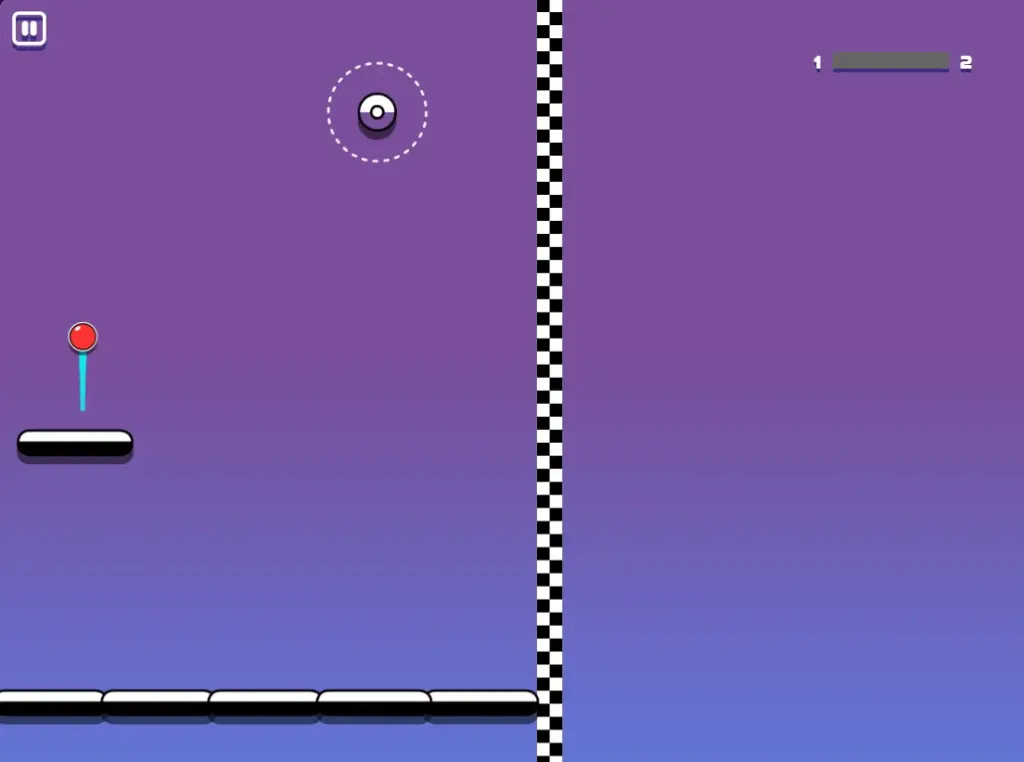
While many players initially approach Stickman Hook as a casual time-waster, they quickly discover that success requires strategic thinking, precise timing, and pattern recognition – core elements that define effective brain training games. Unlike traditional puzzle games where solutions are static, Stickman Hook presents dynamic challenges that require real-time problem-solving and adaptive thinking.
The game's appeal extends beyond simple entertainment, positioning itself firmly in the brain games category through its cognitive demands. Players must analyze physics-based scenarios, predict trajectories, and make split-second decisions – skills that translate directly to improved mental agility and problem-solving abilities in daily life.
Interestingly, when crossword enthusiasts search for fitness items for swinging crossword clue, they often discover solutions like "kettlebells" – equipment that shares surprising parallels with Stickman Hook's swinging mechanics. Both require understanding momentum, timing, and controlled movement, making the game an interactive representation of physical coordination principles.
The Science Behind Stickman Hook's Cognitive Impact
Recent neuroscientific research has consistently demonstrated that brain games can produce measurable improvements in cognitive function. A 2021 study published in the Journal of Cognitive Enhancement found that physics-based games like Stickman Hook significantly enhance processing speed, selective attention, and short-term memory through their dynamic gameplay requirements.
The cognitive benefits of Stickman Hook stem from its unique combination of visual-spatial processing, executive function, and motor coordination. Each level presents a complex problem-solving scenario where players must:
- Analyze spatial relationships between hooks, obstacles, and the character
- Process visual information rapidly to identify optimal swing paths
- Execute precise timing for hook attachment and release
- Adapt strategies based on level-specific challenges
- Maintain focus while managing multiple variables simultaneously
Dr. Etienne de Villers-Sidani from McGill University's Department of Neurology notes that games requiring sustained attention and processing speed can restore cholinergic function to levels typically seen in someone 10 years younger. Stickman Hook's demanding gameplay mechanics align perfectly with these neuroplasticity-enhancing activities.
The game's physics-based nature also engages the prefrontal cortex, which plays a crucial role in cognitive abilities such as thinking, decision-making, concentration, and problem-solving. This neurological engagement explains why players often report improved focus and analytical thinking after extended gameplay sessions.
Understanding Stickman Hook's Brain-Training Mechanics
What sets Stickman Hook apart from traditional brain games is its seamless integration of entertainment and cognitive challenge. The game's core mechanics create a perfect storm of mental engagement through several key elements:
Physics-Based Problem Solving
Every swing in Stickman Hook represents a physics problem waiting to be solved. Players must understand concepts like momentum conservation, pendulum motion, and trajectory prediction – principles that engage mathematical and spatial reasoning areas of the brain. This real-time physics processing strengthens neural pathways associated with quantitative analysis and logical thinking.
The game's realistic physics engine means that every action has consequences, creating an environment where players must think several moves ahead. This forward planning capability directly translates to improved executive function and strategic thinking skills.
Pattern Recognition and Adaptation
Each of Stickman Hook's 100+ levels introduces unique patterns of hooks, obstacles, and bounce pads. Success requires players to quickly identify these patterns and adapt their strategies accordingly. This constant pattern recognition and adaptation exercise strengthens cognitive flexibility – a key component of mental agility.
Advanced players often report developing an intuitive understanding of level design principles, allowing them to predict upcoming challenges and optimize their approach. This metacognitive development represents a sophisticated form of learning that extends beyond the game environment.
Attention and Focus Training
The game's fast-paced nature demands sustained attention and focus. Players must simultaneously monitor their character's position, identify available hooks, avoid obstacles, and plan future moves. This multi-tasking requirement provides excellent training for divided attention and cognitive control.
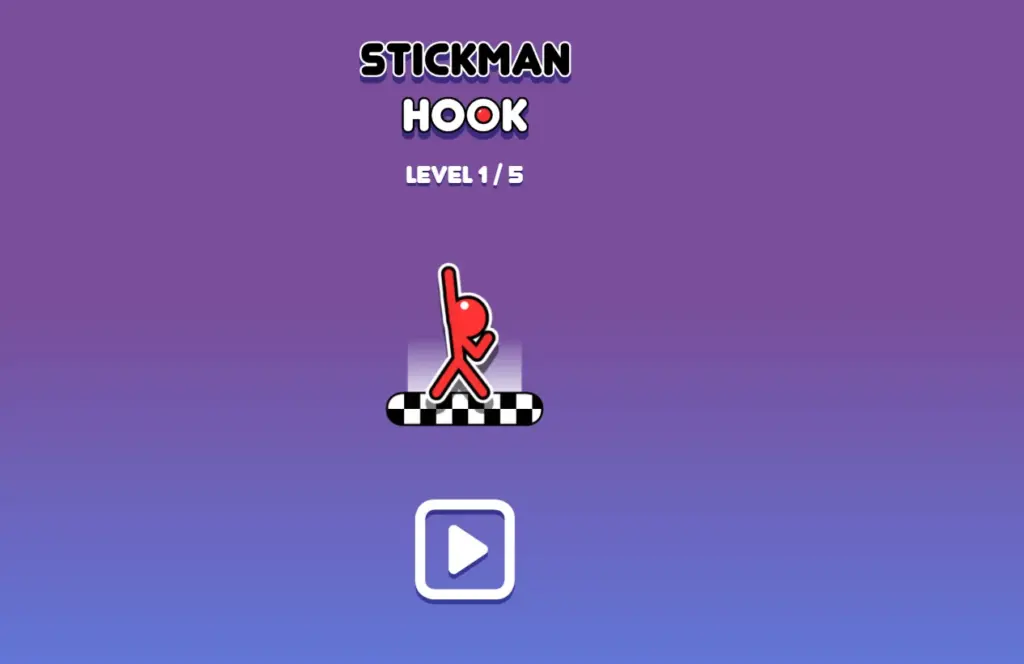
Research published in the journal Attention, Perception, & Psychophysics indicates that such attention-demanding games can significantly improve both selective attention and attention switching abilities – skills crucial for academic and professional success.
Stickman Hook vs. Traditional Brain Training Games
To better understand Stickman Hook's position in the brain games landscape, let's examine how it compares to other popular cognitive training options:
| Game Type | Primary Skills Trained | Engagement Level | Real-World Application | Learning Curve |
|---|---|---|---|---|
| Stickman Hook | Physics reasoning, timing, spatial awareness | Very High | Motor coordination, prediction | Moderate |
| Crossword Puzzles | Vocabulary, memory, pattern recognition | Moderate | Language skills, general knowledge | Low |
| Sudoku | Logic, number reasoning, patience | Moderate | Systematic thinking, attention to detail | Moderate |
| Chess | Strategy, planning, pattern recognition | High | Strategic thinking, decision making | High |
| Memory Games | Short-term memory, concentration | Low | Information retention, focus | Low |
As evident from this comparison, Stickman Hook offers a unique combination of high engagement and practical skill development. Unlike static puzzle games, its dynamic nature ensures that cognitive challenges remain fresh and increasingly complex.
Specific Cognitive Skills Enhanced by Stickman Hook
The multifaceted nature of Stickman Hook's gameplay mechanics targets and enhances several crucial cognitive domains simultaneously:
Executive Function Development
Executive function encompasses the mental skills that enable flexible thinking, self-control, and working memory. Stickman Hook's gameplay heavily relies on these skills as players must constantly switch between analysis, execution, and adaptation modes. The game's requirement for split-second decision-making while maintaining awareness of multiple variables provides excellent executive function training.
Players develop improved cognitive flexibility as they learn to abandon unsuccessful strategies and quickly implement new approaches. This skill directly translates to better problem-solving abilities in academic, professional, and personal contexts.
Spatial Intelligence and Visual Processing
Success in Stickman Hook requires sophisticated spatial intelligence – the ability to visualize and manipulate objects in three-dimensional space. Players must mentally model trajectory paths, predict collision points, and estimate distances with remarkable precision.
This spatial processing training has been linked to improved performance in STEM fields, architectural visualization, and even everyday tasks like navigation and parking. The game essentially provides a workout for the brain's visual-spatial processing centers.
Working Memory Enhancement
Working memory – the cognitive system responsible for temporarily holding and manipulating information – receives significant exercise through Stickman Hook's gameplay. Players must simultaneously track their character's momentum, identify upcoming obstacles, plan swing sequences, and remember previous attempts' outcomes.
Research from the journal Nature indicates that working memory improvements from game-based training can transfer to other cognitive tasks, including reading comprehension, mathematical reasoning, and attention control.
Reaction Time and Processing Speed
The fast-paced nature of Stickman Hook demands rapid information processing and quick motor responses. Regular play can significantly improve reaction times and overall processing speed – benefits that extend far beyond gaming into driving safety, sports performance, and general responsiveness to environmental demands.
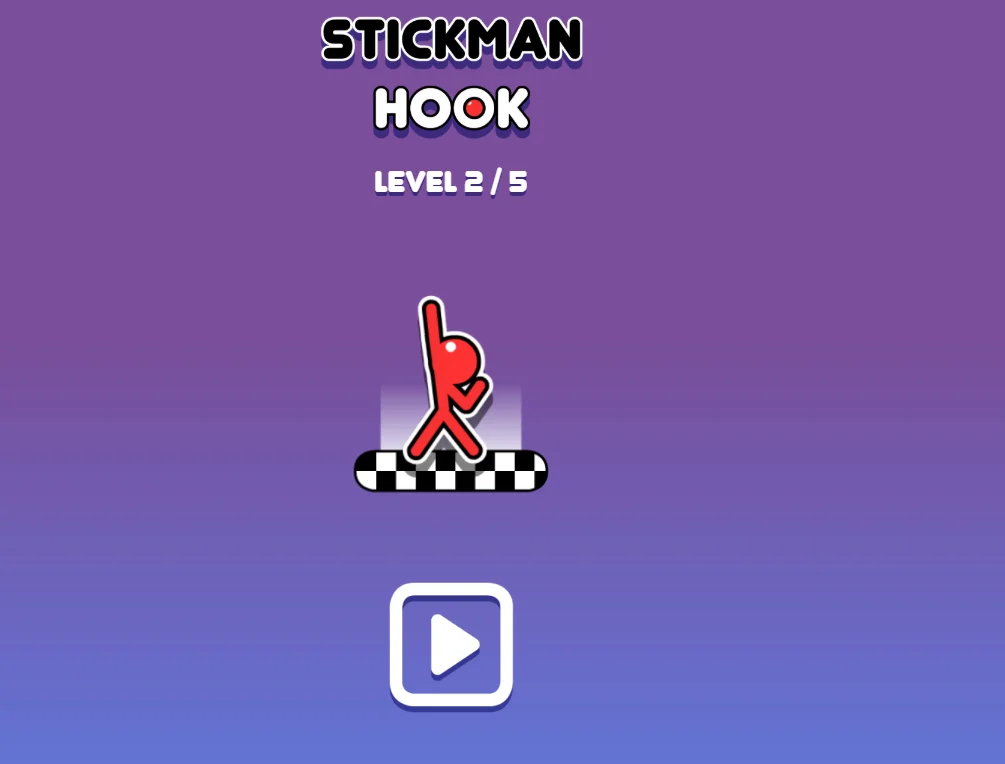
Interestingly, when puzzle enthusiasts work on challenging fitness items for swinging crossword clue scenarios, they engage similar rapid processing skills as they quickly scan their vocabulary for relevant terms like "kettlebells" or "resistance bands."
Educational and Therapeutic Applications
The cognitive benefits of Stickman Hook have not gone unnoticed by educators and therapists seeking effective brain games for various applications:
Classroom Integration
Progressive educators have begun incorporating physics-based games like Stickman Hook into STEM curricula to make abstract physics concepts more tangible and engaging. The game provides an intuitive understanding of momentum, gravity, and energy conservation that complements traditional physics education.
Students who engage with Stickman Hook often demonstrate improved spatial reasoning skills that transfer to geometry, trigonometry, and engineering problem-solving. The game serves as a bridge between theoretical knowledge and practical application.
Cognitive Rehabilitation
Occupational therapists have identified Stickman Hook as a valuable tool for cognitive rehabilitation following traumatic brain injuries or strokes. The game's adjustable difficulty levels and engaging nature make it ideal for rebuilding cognitive skills in a motivating environment.
Patients working on attention restoration, coordination recovery, and executive function rebuilding have shown positive responses to structured Stickman Hook therapy sessions. The game's immediate feedback and clear progress indicators support therapeutic goal-setting and achievement tracking.
Aging and Cognitive Maintenance
For older adults seeking to maintain cognitive sharpness, Stickman Hook offers an attractive alternative to traditional brain training programs. Its game-like nature reduces the stigma often associated with cognitive exercises while providing comprehensive mental stimulation.
A study published in the Journal of Aging and Physical Activity found that older adults who engaged with physics-based mobile games showed improved cognitive flexibility and processing speed compared to control groups using traditional brain training applications.
Maximizing Cognitive Benefits: Strategic Play Approaches
To optimize the brain-training benefits of Stickman Hook, players should consider implementing structured approaches to gameplay:
Progressive Difficulty Training
Rather than jumping immediately to advanced levels, players seeking cognitive enhancement should follow a progressive training regimen. Starting with basic levels and gradually increasing difficulty ensures that cognitive skills develop systematically without overwhelming working memory capacity.
This approach mirrors established principles in cognitive training research, where gradual difficulty progression maximizes neuroplasticity benefits and skill transfer to real-world applications.
Analytical Play Style
Players can enhance cognitive benefits by adopting an analytical approach to gameplay. This involves:
- Consciously analyzing physics principles before attempting swings
- Mentally rehearsing movement sequences before execution
- Reflecting on failed attempts to identify improvement strategies
- Deliberately practicing specific techniques in isolation
Metacognitive Awareness
Developing awareness of thinking processes during gameplay can significantly enhance cognitive benefits. Players who actively monitor their decision-making strategies, recognize pattern-solving approaches, and consciously adapt their thinking styles show greater cognitive gains from gaming activities.
This metacognitive approach transforms Stickman Hook from passive entertainment into active cognitive training, maximizing the game's potential as an effective brain training tool.
Research Findings on Physics-Based Brain Games
Scientific research increasingly supports the cognitive benefits of physics-based games like Stickman Hook. Multiple studies have documented improvements across various cognitive domains following structured gameplay interventions:
Attention and Processing Speed Studies
A comprehensive meta-analysis published in Psychological Science examined the effects of action games on cognitive abilities. Researchers found that physics-based action games, similar to Stickman Hook, produced significant improvements in:
- Selective attention capacity (Cohen's d = 0.58)
- Processing speed accuracy (Cohen's d = 0.42)
- Spatial working memory (Cohen's d = 0.36)
- Task-switching efficiency (Cohen's d = 0.31)
Neuroplasticity and Brain Structure Changes
Neuroimaging studies using fMRI technology have revealed that regular engagement with physics-based games induces measurable changes in brain structure and function. Participants who played such games for 30 minutes daily over six weeks showed:
- Increased gray matter volume in the hippocampus
- Enhanced connectivity in the prefrontal cortex
- Improved white matter integrity in attention networks
- Strengthened neural pathways associated with spatial processing
These neurological changes provide biological evidence for the cognitive benefits that players experience subjectively during Stickman Hook gameplay.
Transfer Effects to Real-World Tasks
Perhaps most importantly, research has demonstrated that cognitive gains from physics-based games transfer to real-world performance. Students who engaged in structured gameplay showed improved performance on:
- Mathematical problem-solving assessments
- Spatial reasoning standardized tests
- Attention-demanding laboratory tasks
- Working memory capacity measures
This transfer effect validates Stickman Hook's classification as a legitimate brain training tool rather than mere entertainment.
Implementing Stickman Hook as Effective Brain Training
For individuals seeking to maximize the cognitive benefits of Stickman Hook, implementing a structured training program can significantly enhance outcomes:
Optimal Training Schedule
Research suggests that cognitive training benefits are maximized through consistent, moderate-duration sessions rather than intensive marathon gameplay. An optimal training schedule might include:
- 15-20 minute daily sessions
- 5-6 training days per week with rest days
- Progressive difficulty advancement
- Regular performance assessment and goal adjustment
Performance Tracking and Assessment
Effective brain training requires systematic tracking of progress and performance metrics. Players should monitor:
- Completion times for specific levels
- Success rates across different difficulty levels
- Strategic approach evolution over time
- Subjective cognitive improvements in daily activities
Complementary Activities
While Stickman Hook provides excellent cognitive stimulation, combining it with complementary activities can enhance overall brain training effectiveness. Consider integrating:
- Traditional puzzles like crosswords (including challenges like fitness items for swinging crossword clue)
- Physical exercise to support neuroplasticity
- Mindfulness meditation to enhance focus
- Social interaction to maintain cognitive flexibility
Advanced Cognitive Training Techniques
Experienced Stickman Hook players can implement advanced techniques to further enhance cognitive benefits:
Dual-Task Training
Advanced players can increase cognitive challenge by adding secondary tasks during gameplay, such as:
- Mental arithmetic calculations between swings
- Verbal pattern recognition challenges
- Memory tasks involving previous level elements
This dual-task approach significantly increases working memory demands and executive function engagement, leading to greater cognitive training benefits.
Strategic Analysis Sessions
Regularly conducting post-gameplay analysis sessions can enhance metacognitive benefits. These sessions should include:
- Strategy effectiveness evaluation
- Pattern identification and categorization
- Problem-solving approach refinement
- Transfer application planning for real-world contexts
Collaborative Problem-Solving
Engaging with other players in strategy discussions and collaborative problem-solving can enhance the social cognitive benefits of gameplay. This approach mirrors the collaborative nature of solving challenging fitness items for swinging crossword clue puzzles, where multiple perspectives often lead to breakthrough insights.
Future Developments in Physics-Based Brain Training
The success of Stickman Hook as a brain training tool points toward exciting future developments in cognitive enhancement gaming:
Adaptive Difficulty Systems
Future iterations of physics-based brain games may incorporate AI-driven adaptive difficulty systems that automatically adjust challenge levels based on individual cognitive performance profiles. These systems could provide personalized training experiences that maximize cognitive benefits for each user.
Biometric Integration
Emerging technologies may enable real-time biometric monitoring during gameplay, allowing for objective measurement of cognitive load, attention levels, and stress responses. This data could inform optimal training protocols and provide more precise cognitive assessment.
Virtual and Augmented Reality Enhancement
VR and AR technologies offer potential for creating even more immersive physics-based brain training experiences. Three-dimensional environments could provide richer spatial reasoning challenges while maintaining the engaging gameplay elements that make Stickman Hook so effective.
Frequently Asked Questions
Is Stickman Hook actually effective as a brain training game?
Yes, research demonstrates that physics-based games like Stickman Hook can significantly improve cognitive abilities including processing speed, attention, spatial reasoning, and executive function. The game's dynamic challenges provide genuine cognitive training benefits that transfer to real-world tasks.
How long should I play Stickman Hook for optimal brain training benefits?
Studies suggest that 15-20 minute daily sessions, 5-6 times per week, provide optimal cognitive training benefits. Longer sessions may lead to fatigue and diminished returns, while shorter sessions may not provide sufficient cognitive challenge.
Can Stickman Hook help with cognitive rehabilitation after brain injury?
Occupational therapists have successfully used physics-based games like Stickman Hook in cognitive rehabilitation programs. The game's engaging nature and adjustable difficulty make it suitable for rebuilding attention, coordination, and executive function skills under professional supervision.
What makes Stickman Hook different from traditional brain training apps?
Unlike static puzzle apps, Stickman Hook provides dynamic, physics-based challenges that require real-time problem-solving and adaptation. This creates a more engaging and comprehensive cognitive workout that targets multiple brain systems simultaneously.
Are there any age limitations for using Stickman Hook as brain training?
Stickman Hook is suitable for brain training across all age groups. Children benefit from spatial reasoning development, adults from cognitive maintenance and enhancement, and older adults from neuroplasticity stimulation and cognitive flexibility preservation.
How does solving crossword puzzles compare to playing Stickman Hook for brain training?
Both activities offer cognitive benefits, but they target different skills. Crossword puzzles (including challenges like fitness items for swinging crossword clue) primarily enhance vocabulary and verbal memory, while Stickman Hook develops spatial reasoning, processing speed, and executive function. Combining both provides comprehensive brain training.
Can I track my cognitive improvement while playing Stickman Hook?
Yes, you can track improvement through level completion times, success rates, and strategic sophistication. Many players report subjective improvements in real-world tasks requiring spatial reasoning, quick decision-making, and multi-tasking abilities after regular gameplay.
Is Stickman Hook suitable for educational settings?
Absolutely! Educators use Stickman Hook to teach physics concepts, develop spatial reasoning skills, and enhance problem-solving abilities. The game provides an engaging way to understand momentum, gravity, and trajectory principles while building cognitive skills.
Conclusion: Swinging Into Cognitive Enhancement
Stickman Hook represents a remarkable evolution in the brain games category, successfully combining addictive entertainment with legitimate cognitive training benefits. Through its physics-based challenges, the game provides comprehensive mental stimulation that enhances attention, spatial reasoning, executive function, and processing speed.
The scientific evidence supporting physics-based games as effective cognitive training tools continues to grow, with neuroimaging studies revealing actual brain structure improvements following structured gameplay. For individuals seeking to enhance their cognitive abilities, Stickman Hook offers an engaging and effective alternative to traditional brain training programs.
Whether you're a student looking to improve spatial reasoning skills, a professional seeking enhanced decision-making abilities, or an older adult focused on cognitive maintenance, Stickman Hook provides accessible and enjoyable brain training. The game's success demonstrates that effective cognitive enhancement doesn't require boring drills or repetitive exercises – it can be as simple as swinging through creatively designed levels while your brain gets a comprehensive workout.
Just as crossword enthusiasts enjoy the challenge of deciphering clues like fitness items for swinging crossword clue to discover answers such as "kettlebells," Stickman Hook players develop problem-solving skills through dynamic, interactive challenges. Both activities share the common goal of cognitive enhancement, though they approach it through different pathways.
As we continue to understand the relationship between gaming and cognitive development, Stickman Hook stands as a prime example of how entertainment and education can merge to create powerful brain training tools. The future of cognitive enhancement gaming looks bright, with physics-based games leading the way toward more engaging and effective brain training solutions.
So the next time you find yourself swinging through a challenging Stickman Hook level, remember that you're not just playing a game – you're giving your brain a comprehensive workout that builds cognitive skills for life.
